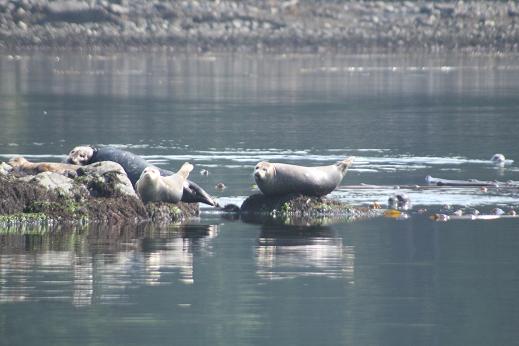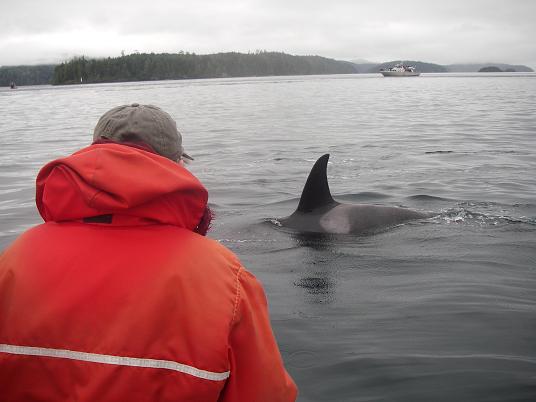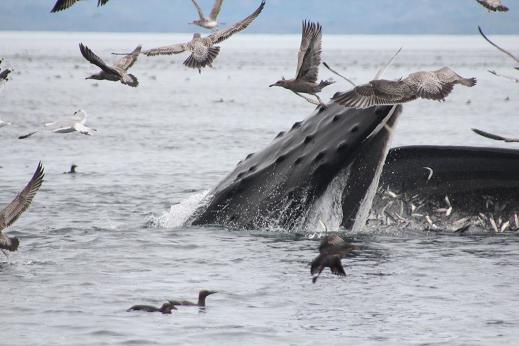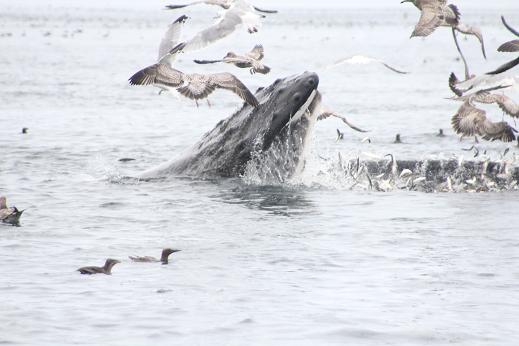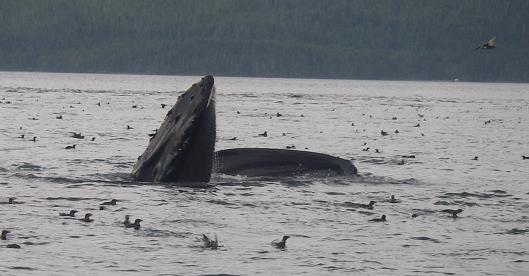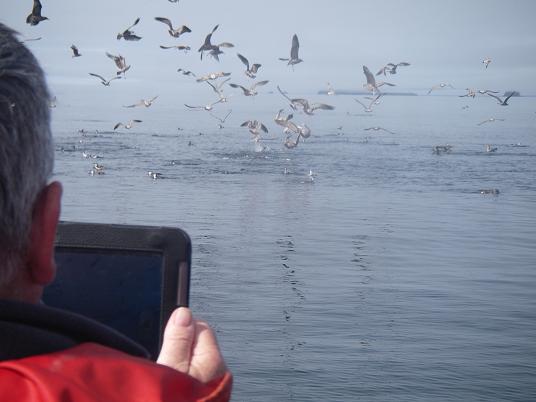Harbour seals are found in British Columbia often in coastal waters, estuaries and river systems. The Pacific harbour seal inhabits the B.C. coast. The adult seal may reach a length of 1.6 – 1.9 m (5 –6 feet) and weigh from 60 – 120 kg (132- 265 lbs.), while ranging in colour from brownish to black with a speckled pattern. Your guide often takes them for granted because they are so abundant so remind them if you want a good picture.
Tag Archives: Whale Watching
Killer Whale “Fin”
This is a little more graceful looking than yesterday’s post especially when it is coming toward the boat. The dorsal fin of a male killer whale is proportionately larger than that of a female. In adult males, the dorsal fin is tall and triangular. Reaching a height of up to 1.8 m (6 ft.) in a large adult male, it is the tallest dorsal fin of all cetaceans. And this photo is a good example of a large male.
Humpback Whale “Fin”
Drifting with Killer Whales
The white dot on land above the guest’s head is Cracroft Point. The area between our boat and the point is a common feeding area for killer whales. A good morning whale watching is to come out a Cracroft Point and find a pod of orca because that means we can turn off our engine and drift while the orca feed. With engines off the orca often surface close to the boat which makes for an excellent photo opportunity.
Also Whale Watching 3 of 3
Also Whale Watching 2 of 3
Clearer, same ducks in the water and a mouth full. Humpbacks will feed on krill and various kinds of small, shoaling fish such as herring (check out the mouth) and mackerel. They may eat up to 1,400 kg (3,000 lbs.) of food a day. As the mouth closes the whale will press down with its tongue forcing all water out through baleen plates. These baleen plates hang in row from each side of the upper jaw. This traps the herring / lunch inside.
Also Whale Watching 1 of 3
A little more interesting than deer on the beach is a humpback whale lunge feeding on a herring ball. This is why your guide is always looking for herring balls. (See September 25th posting) At first I thought that this photo taken by Glen (a fellow guide) was a little out of focus until I realized that was water running off the whales back. Better tomorrow…
A Matter of Position
Waiting for? 2 of 2
Waiting for? 1 of 2
As a guide and blogger for the camp I try to get interesting shots that give me something to talk about. In this case it is a guest ready for a photo. What is so interesting about seagulls? For a guide the gulls are one of the most important sites on a whale watching tour. Herring are one of the main foods for humpback whales. Ducks feeding on herring force them into a tight ball that may vary in size from basketball to boat size. As the ball rotates it tends to move toward the surface, which in turn attracts the gulls to feed. It also attracts humpbacks that lunge up and try to take the ball in one mouth full. Tomorrow….
